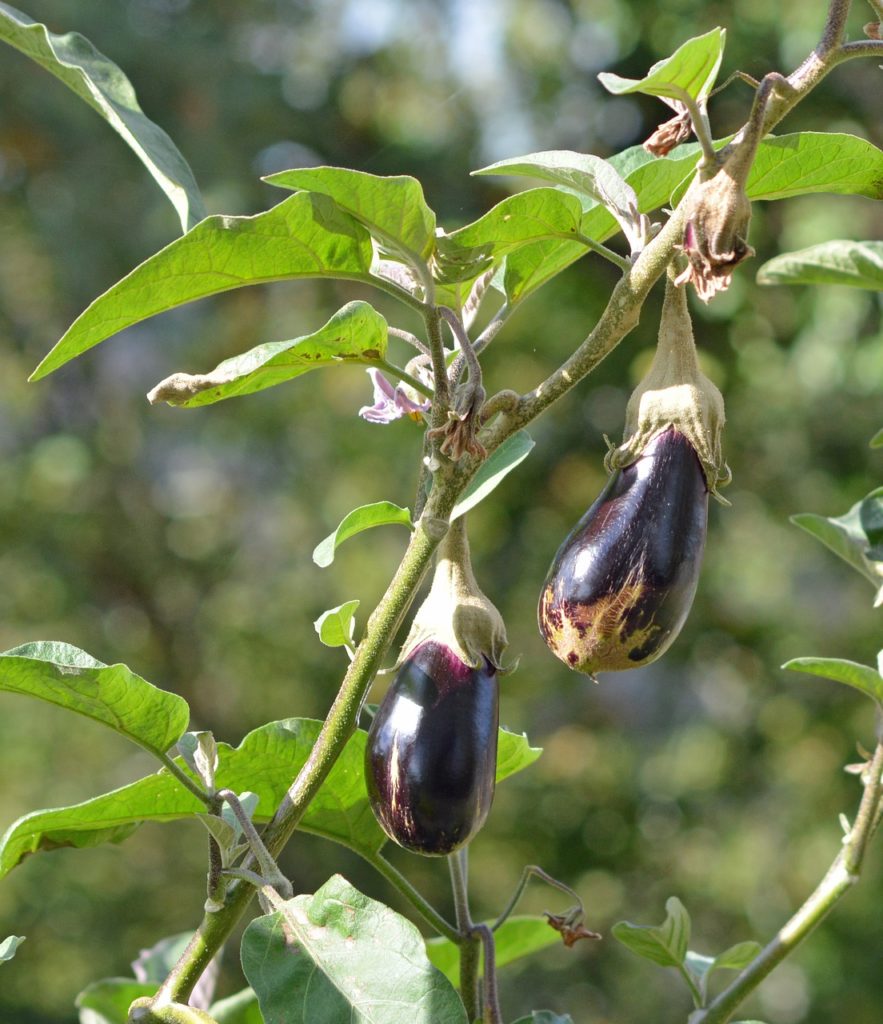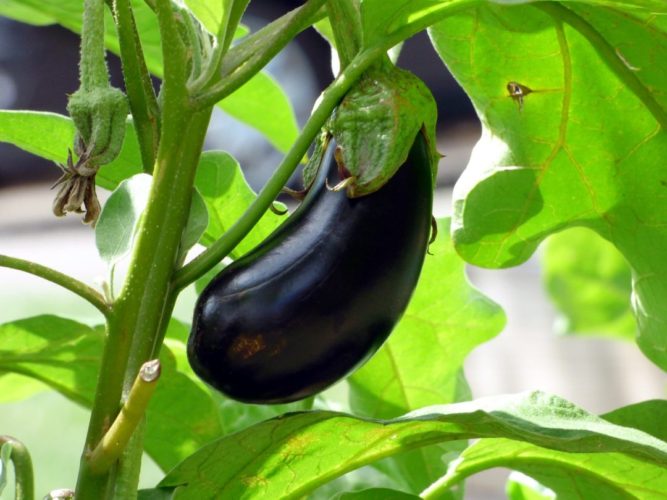Aubergine, also known as eggplant or brinjal, is a versatile vegetable of the nightshade family that is worth growing on your smallholding.
Aubergines grow in warm, sunny environments so they do well in a South African summer.
These plants grow best in a nutrient rich, well-draining soil. Use a good quality compost to enrich your soil before planting your seeds or seedlings.
 If you are planting in rows, space your plants about 45cm apart to give them enough space to grow. If you are companion planting with other species, or growing in squares ensure there is a gap of about 40cm on all sides of your aubergine plant to ensure it does not become crowded.
If you are planting in rows, space your plants about 45cm apart to give them enough space to grow. If you are companion planting with other species, or growing in squares ensure there is a gap of about 40cm on all sides of your aubergine plant to ensure it does not become crowded.
Keep the young plants moist and weed-free. Once you see flowers beginning to form, you can feed your soil again with a fertiliser high in potassium. This will encourage the development of the fruit.
Eggplants do not cope with frost. If you are growing in an area prone to frost, sow your seeds under cover in late winter/early spring. Once you are sure frost-season is over, you can plant your seedlings out. In frost-free areas, start the process in spring.
Your brinjal plants will need staking as they can grow into large bushes with many branches. Staking ensures easy access to developing vegetables, making harvesting easier. The larger the vegetables, the heavier they become on the plant and this can cause the plant to droop.
Brinjal plants take about three months to produce ripe vegetables. Harvest the vegetables individually by cutting them off the plant or twisting them off. A plant will continue to bear fruit after harvest. You can also cut back the plant to encourage more growth.
Pests and Diseases

As with all members of the nightshade family, these plants can be affected by cutworms, especially in the early growth phase. Cutworms are the greyish, hairless caterpillars produced by a moth. They come out at night to feed on the stem of the plant, cutting it off from the roots. You can remove them manually at night. Try sprinkling diatomaceous earth around the plants. There are also eco-friendly insecticides for these worms. Plant tansy, sage and thyme amongst your nightshade plants, as they repel the cutworms.
Spidermites can be a problem on adult brinjal plants. You will see the tops of the leaves beginning to turn yellow. Geranium plants can help repel these little pests.
Leaf beetles can also affect your aubergine plants. They eat the underside of leaves, causing a lace-like pattern to develop.
Like other members of the nightshade family, bacterial wilt can damage your brinjal plants. It is often common in soil that has been used for these crops (tomatoes, peppers, potatoes, chillis) for a long period of time. Employing a system and crop rotation, and thorough weeding of your soil can help prevent this.
This is part of a series on growing vegetables from the nightshade family. For more, click here. If you enjoyed this article, subscribe to receive more like this.

